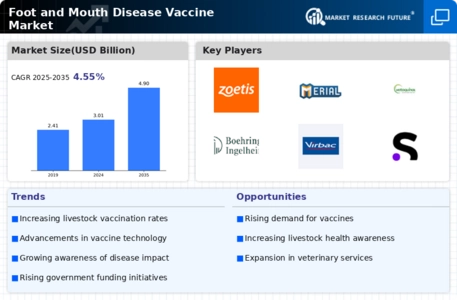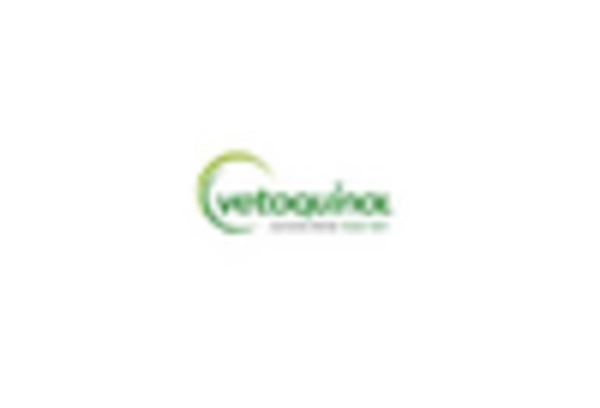International Trade and Export Regulations
The Foot and Mouth Disease Vaccine Market is also influenced by international trade dynamics and export regulations. Countries that export livestock or animal products are often required to adhere to strict health standards, including vaccination against foot and mouth disease. This regulatory environment creates a consistent demand for vaccines, as compliance with international trade agreements is essential for market access. For instance, nations that have successfully implemented vaccination programs have seen a boost in their export capabilities, leading to increased revenues. As trade relationships evolve and new markets open, the demand for effective vaccines is likely to grow, further solidifying the market's position in the global agricultural landscape.
Increased Government Initiatives and Funding
Government initiatives play a pivotal role in shaping the Foot and Mouth Disease Vaccine Market. Many countries are implementing stringent regulations and policies aimed at controlling outbreaks of foot and mouth disease. Increased funding for research and development of vaccines is being observed, with governments allocating substantial budgets to enhance animal health. For example, in recent years, several nations have launched vaccination campaigns supported by government subsidies, which have led to a notable increase in vaccination coverage among livestock. This proactive approach is expected to drive market growth, as it not only ensures better disease management but also promotes the economic stability of the agricultural sector.
Rising Awareness of Animal Health and Welfare
The Foot and Mouth Disease Vaccine Market is witnessing a heightened awareness regarding animal health and welfare among farmers and consumers alike. This growing consciousness is leading to increased demand for effective vaccination programs to protect livestock from diseases. As consumers become more concerned about the origins of their food and the health of animals, farmers are compelled to adopt better health practices, including vaccination. Reports indicate that regions with higher awareness levels have seen a 20% increase in vaccination rates over the past few years. This trend is likely to continue, further propelling the market as stakeholders recognize the importance of maintaining healthy livestock populations.
Technological Advancements in Vaccine Development
The Foot and Mouth Disease Vaccine Market is experiencing a surge in technological advancements that enhance vaccine efficacy and safety. Innovations such as recombinant DNA technology and virus-like particle vaccines are being integrated into production processes. These advancements not only improve the immunogenicity of vaccines but also reduce the time required for development. For instance, the introduction of mRNA vaccine technology has shown promise in providing rapid responses to outbreaks. As a result, the market is projected to grow at a compound annual growth rate of approximately 6% over the next five years, driven by these technological improvements. The ability to produce vaccines more efficiently and effectively is likely to bolster the overall market landscape.
Emerging Economies and Livestock Production Growth
Emerging economies are significantly influencing the Foot and Mouth Disease Vaccine Market due to their rapid growth in livestock production. Countries in Asia and Africa are expanding their agricultural sectors, leading to increased livestock populations. This growth necessitates effective disease management strategies, including vaccination against foot and mouth disease. As these regions strive to enhance food security and meet the rising demand for animal protein, the need for vaccines becomes more pronounced. Market analysts project that the demand for foot and mouth disease vaccines in these emerging markets could increase by over 30% in the next decade, driven by the expansion of livestock farming and the associated health requirements.


















Leave a Comment